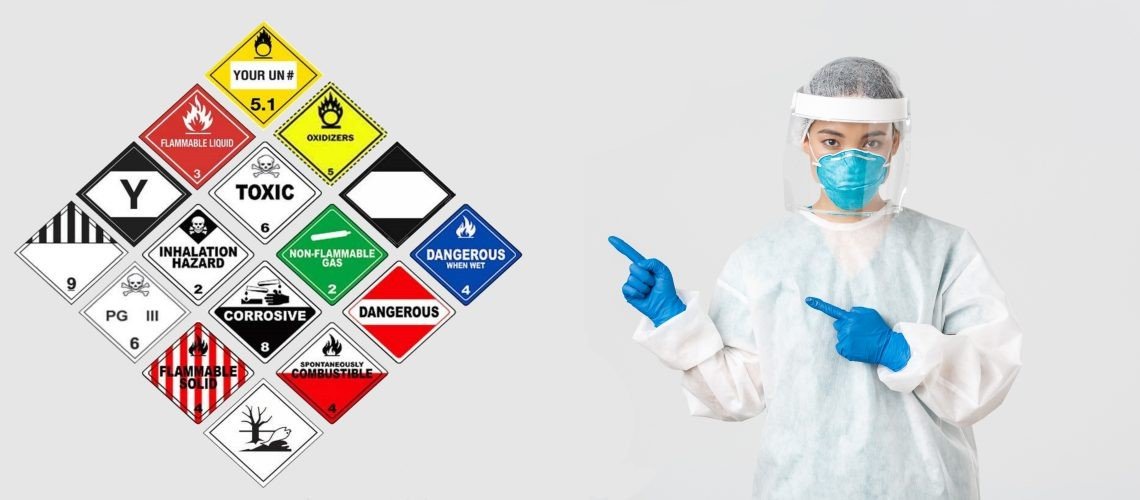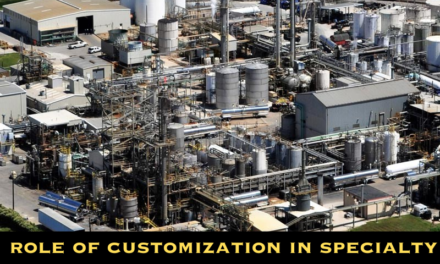Safety and regulatory standards play a significant role in shaping the operations, practices, and policies of the chemical industry. These standards are designed to protect human health, safeguard the environment, and ensure the safe production, handling, and disposal of chemicals. They also help maintain public trust in the industry and minimize the risk of accidents or environmental damage. Here’s a breakdown of how safety and regulatory standards impact the chemical industry:
1. Ensuring Worker Safety
- Health and Safety Regulations: Regulatory bodies such as the Occupational Safety and Health Administration (OSHA) in the United States and the Health and Safety Executive (HSE) in the UK set stringent standards to ensure the health and safety of workers in the chemical industry. These regulations cover a wide range of safety issues, such as:
- Personal protective equipment (PPE): Ensuring workers wear appropriate safety gear like gloves, goggles, respirators, and protective clothing to minimize exposure to hazardous chemicals.
- Hazard communication: Companies must inform workers about the chemicals they are handling through Safety Data Sheets (SDS) and proper labeling, ensuring that employees understand the risks and safety measures associated with each chemical.
- Emergency preparedness: Standards require facilities to have emergency response plans in place for chemical spills, leaks, fires, or explosions, and for training employees in handling such emergencies.
- Safe handling of hazardous chemicals: Regulations govern the safe storage, transportation, and use of hazardous substances to prevent accidents in the workplace.
- Process Safety Management (PSM): Process safety is critical in the chemical industry, especially in operations involving high-risk processes like chemical manufacturing and petrochemical production. Standards such as PSM require the implementation of risk assessments, safety audits, and hazard analyses to prevent major industrial accidents, such as explosions or toxic chemical releases.
2. Environmental Protection
- Pollution Prevention: Regulatory frameworks, such as the Clean Air Act and Clean Water Act in the U.S., require chemical companies to minimize air, water, and soil pollution. These laws set limits on the amount of pollutants companies can emit into the environment and enforce measures to reduce emissions, such as using air filtration systems and implementing water treatment plants for wastewater.
- Waste Management: The Resource Conservation and Recovery Act (RCRA) governs the disposal and treatment of hazardous waste in the U.S. Under these regulations, chemical companies must adhere to strict guidelines for storing, treating, and disposing of chemical waste to prevent contamination of land and water resources. Internationally, companies must also comply with local laws regarding waste disposal and the management of hazardous materials.
- Environmental Impact Assessments (EIA): Regulatory requirements often mandate that chemical companies perform an EIA before launching new projects or expanding existing operations. This helps assess potential environmental risks and outlines mitigation strategies for any adverse effects on local ecosystems or communities.
3. Compliance with Chemical Safety Standards
- Globally Harmonized System (GHS): The GHS, adopted by many countries around the world, standardizes the classification and labeling of chemicals, providing clear guidelines for hazard identification and risk communication. This system helps ensure that chemical hazards are consistently communicated across borders, improving global safety.
- REACH and RoHS Regulations: In the European Union, the Registration, Evaluation, Authorization, and Restriction of Chemicals (REACH) regulation controls the production and use of chemical substances. REACH aims to protect human health and the environment by requiring chemical manufacturers to assess and manage the risks associated with the chemicals they produce or import.
- The Restriction of Hazardous Substances (RoHS) directive restricts the use of certain hazardous materials in electrical and electronic equipment, requiring chemical companies to reformulate products to meet stricter safety and environmental criteria.
- Toxic Substances Control Act (TSCA): In the United States, the TSCA regulates the manufacture, import, and use of chemicals. It requires chemical manufacturers to provide data on the safety of their products and comply with regulations that limit the use of toxic substances.
4. Influence on Product Development and Innovation
- Material Safety and Testing: Regulatory standards influence the development of new chemicals and materials. For example, chemical manufacturers must test new substances for their toxicity, environmental impact, and suitability for their intended applications before they can be brought to market. This is essential in the production of consumer products, pharmaceuticals, and food-grade chemicals, where safety is paramount.
- Product Labeling: Regulatory requirements often dictate how chemicals and products should be labeled, including the disclosure of ingredients, hazard warnings, and safety instructions. This ensures that consumers and end-users are aware of any potential risks when using chemical-based products.
- Sustainable Product Design: Regulatory standards may encourage or mandate companies to develop more sustainable products and processes. For example, restrictions on harmful chemicals may drive innovation in bio-based or environmentally friendly alternatives, such as biodegradable plastics or non-toxic paints and coatings.
5. Cost Implications and Compliance Burden
- Compliance Costs: Meeting safety and regulatory standards often requires significant investment in equipment, systems, training, and documentation. Companies may need to invest in advanced technologies, such as automated safety systems, emission control devices, and waste treatment systems to ensure compliance with environmental and safety regulations.
- Laboratory Testing and Reporting: Regulatory compliance often requires extensive testing and reporting, which adds to operational costs. Chemical companies must maintain detailed records of chemical composition, safety protocols, and environmental monitoring to comply with local and international regulations.
- Penalties for Non-compliance: Failing to adhere to safety or regulatory standards can result in fines, legal liabilities, and reputational damage. In some cases, serious violations could lead to plant shutdowns, product recalls, or criminal charges, which have significant financial and operational consequences.
6. Impact on Global Trade and Market Access
- International Compliance: The chemical industry operates globally, and companies must navigate varying safety and regulatory requirements in different countries. For instance, a chemical product that meets the standards of one country may not be allowed in another country due to differences in regulations. This creates both challenges and opportunities for chemical companies to adapt their products to meet international standards.
- Market Competitiveness: Compliance with international safety and environmental standards is often seen as a competitive advantage. Products that are certified to meet the highest safety and environmental criteria can have greater market appeal, especially in regions where consumers and businesses are increasingly prioritizing sustainability and safety.
7. Emerging Regulations and Evolving Standards
- Climate Change Regulations: Growing concerns over climate change are leading to the introduction of stricter environmental regulations, such as carbon emissions limits and sustainable sourcing requirements. The chemical industry is under increasing pressure to reduce its greenhouse gas emissions and invest in low-carbon technologies, which can lead to significant operational and financial changes.
- Circular Economy and Waste Reduction: As the world moves toward a more sustainable, circular economy, chemical companies are facing increasing regulatory pressure to reduce waste, recycle materials, and create products with longer life cycles. Regulations are evolving to encourage the adoption of circular business models, which impacts the way chemicals are produced, used, and disposed of.
- Increased Scrutiny on Hazardous Substances: With rising concerns over chemical safety, regulators are introducing new laws to restrict the use of certain hazardous substances, particularly those with endocrine-disrupting or carcinogenic properties. This drives chemical companies to find safer alternatives and adopt stricter manufacturing processes.
8. Impact on Corporate Reputation
- Public Perception and Consumer Trust: Compliance with safety and regulatory standards is crucial for maintaining a positive reputation. Companies that are perceived as neglecting safety or environmental standards may face public backlash, damaging their brand image. On the other hand, those that exceed regulatory requirements and commit to sustainability can enhance their reputation and build consumer loyalty.
- Social Responsibility and Transparency: Increasingly, consumers, investors, and other stakeholders are demanding greater transparency in how companies handle safety and environmental risks. Chemical companies are expected to be proactive in disclosing their environmental impact, safety practices, and efforts to meet or exceed regulatory standards.
Conclusion
Safety and regulatory standards are vital to the chemical industry’s ability to operate responsibly and sustainably. These standards not only protect workers, the environment, and consumers but also drive innovation, product development, and market competitiveness. However, they also impose costs and challenges, requiring companies to invest in new technologies, process improvements, and compliance management. As regulations continue to evolve, chemical companies must remain agile and proactive to meet emerging standards and maintain safe and sustainable operations.
Hashtags
#ChemicalSafety #RegulatoryCompliance #SafetyFirst #ChemicalRegulations #WorkplaceSafety #ChemicalIndustryStandards #HazardousMaterials #SafetyCulture #ComplianceMatters #HealthAndSafety #EnvironmentalCompliance #SafetyInChemicals #SafeManufacturing #RegulatoryStandards #ChemicalHazards #SafetyInnovation #SafeChemistry #ComplianceInIndustry #OSHAStandards #RiskManagement

















